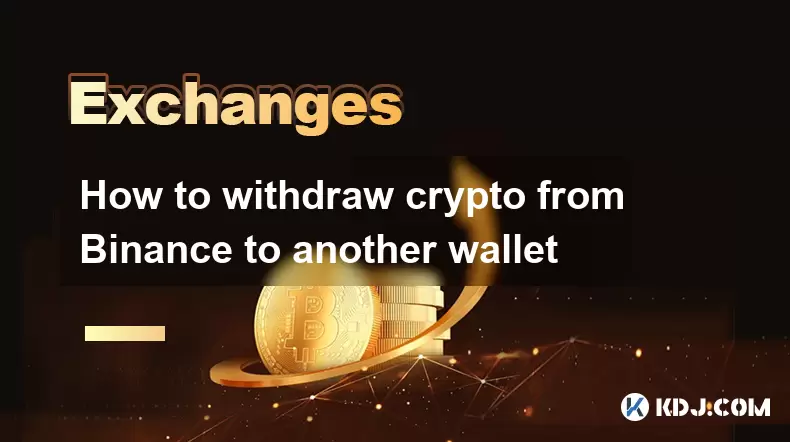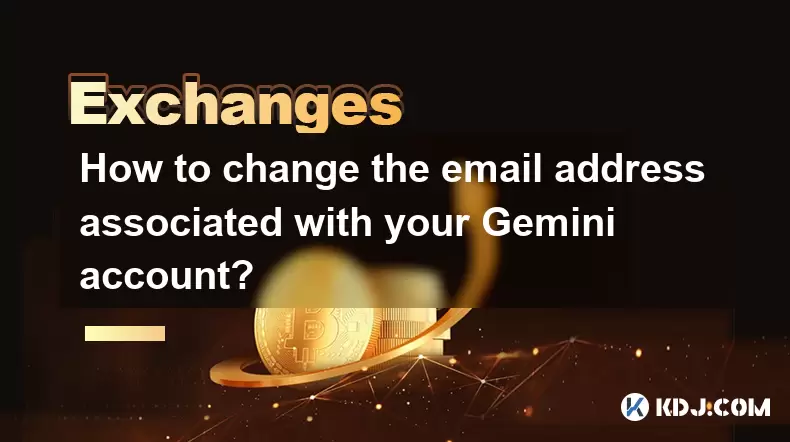-
 Bitcoin
Bitcoin $114200
0.00% -
 Ethereum
Ethereum $3637
0.56% -
 XRP
XRP $2.950
-2.01% -
 Tether USDt
Tether USDt $0.9999
0.02% -
 BNB
BNB $761.0
0.55% -
 Solana
Solana $164.1
-1.38% -
 USDC
USDC $0.9999
0.02% -
 TRON
TRON $0.3332
0.36% -
 Dogecoin
Dogecoin $0.2012
-0.52% -
 Cardano
Cardano $0.7261
-1.41% -
 Hyperliquid
Hyperliquid $37.62
-2.13% -
 Stellar
Stellar $0.3930
-2.65% -
 Sui
Sui $3.441
-0.16% -
 Bitcoin Cash
Bitcoin Cash $563.8
0.70% -
 Chainlink
Chainlink $16.50
0.09% -
 Hedera
Hedera $0.2424
-0.14% -
 Ethena USDe
Ethena USDe $1.001
0.01% -
 Avalanche
Avalanche $22.20
0.00% -
 Litecoin
Litecoin $118.0
-2.48% -
 UNUS SED LEO
UNUS SED LEO $8.991
0.12% -
 Toncoin
Toncoin $3.195
-3.87% -
 Shiba Inu
Shiba Inu $0.00001217
0.12% -
 Uniswap
Uniswap $9.674
-0.21% -
 Polkadot
Polkadot $3.633
1.00% -
 Monero
Monero $295.3
-0.82% -
 Dai
Dai $0.9999
0.00% -
 Bitget Token
Bitget Token $4.321
-0.41% -
 Cronos
Cronos $0.1392
0.73% -
 Pepe
Pepe $0.00001027
-0.89% -
 Aave
Aave $258.5
0.32%
How to withdraw crypto from Binance to another wallet
Always verify the correct blockchain network and recipient address when withdrawing crypto from Binance to avoid irreversible fund loss.
Aug 06, 2025 at 05:43 pm

Understanding the Withdrawal Process on Binance
Withdrawing cryptocurrency from Binance to an external wallet involves several essential steps to ensure the transaction is secure and successful. Before initiating any withdrawal, users must verify their account and enable security features such as two-factor authentication (2FA). This step is critical to prevent unauthorized access. The Binance platform supports a wide range of cryptocurrencies, each with its own blockchain network. It is vital to choose the correct network when withdrawing, as sending funds via an incompatible network can result in permanent loss.
To begin, log in to your Binance account and navigate to the "Wallet" section. Select "Spot Wallet" to view your available balances. Click on the "Withdraw" button next to the cryptocurrency you wish to transfer. A withdrawal form will appear, prompting you to enter the recipient wallet address, the amount, and the network. Confirm that the wallet address belongs to a compatible wallet that supports the selected cryptocurrency and network.
Selecting the Correct Network for Withdrawal
One of the most critical aspects of withdrawing crypto from Binance is selecting the correct blockchain network. For example, if you're withdrawing USDT (Tether), Binance offers multiple networks such as BEP2, BEP20 (BSC), ERC20 (Ethereum), TRC20 (Tron), and others. Choosing the wrong network can lead to irreversible fund loss. You must ensure that the destination wallet supports the network you select.
- Check the receiving wallet’s documentation to confirm which networks it supports
- Match the network on Binance with the one supported by your external wallet
- For example, if your wallet only supports ERC20, select ERC20 (Ethereum) on Binance
- Never assume compatibility—always verify the network type before proceeding
If you're withdrawing BTC, ensure you select Bitcoin network (BTC) and not BEP2 or BEP20. Similarly, ETH withdrawals must use the Ethereum network (ERC20). Mismatched networks are a common cause of failed transactions.
Entering the Recipient Wallet Address Accurately
Accuracy in entering the recipient wallet address is non-negotiable. A single incorrect character can send your funds to an invalid or unintended address. Binance provides a warning system, but it cannot guarantee the correctness of manually entered addresses. To minimize risk:
- Use the copy and paste function to transfer the address from your wallet to Binance
- Double-check the first and last few characters of the address
- Avoid typing the address manually, even if you think you’ve memorized it
- Utilize Binance’s address book feature to save verified addresses for future use
After pasting the address, Binance may display the wallet label (if saved) and the network type. Confirm that both match your intended destination. If you're using a hardware wallet like Ledger or Trezor, ensure the device is connected and unlocked before confirming the withdrawal.
Setting the Withdrawal Amount and Fees
Binance allows users to specify the withdrawal amount either manually or by selecting predefined percentages like 25%, 50%, 75%, or 100%. Always leave a small amount of the native token in your Binance account to cover potential future transaction fees. For example, if withdrawing BNB, retain a small balance to pay for any subsequent withdrawals.
Network fees vary depending on the selected blockchain. These fees are paid to miners or validators and are not charged by Binance. You can view the estimated fee before confirming the transaction. Binance displays the network fee and the amount you will receive at the destination.
- Review the fee breakdown carefully
- Higher fees often result in faster confirmation times
- Some networks, like TRC20, have lower fees compared to ERC20
- You cannot adjust the fee amount—it is determined by network congestion
Enter the amount you wish to withdraw, keeping in mind that the final amount received will be the withdrawal amount minus the network fee.
Confirming the Withdrawal with 2FA
After filling in all required fields, click "Submit" to proceed. Binance will prompt you to complete two-factor authentication (2FA) as a security measure. This step is mandatory and ensures that only authorized users can initiate withdrawals.
- Enter the 6-digit code from your Google Authenticator or Authy app
- If using SMS 2FA, input the code sent to your registered phone number
- Approve the transaction through the Binance app if push notifications are enabled
- Never share your 2FA code with anyone
Once 2FA is verified, Binance will process the withdrawal. You’ll receive an email confirmation, and the transaction will appear in your withdrawal history. The time it takes for funds to arrive depends on the blockchain’s confirmation speed.
Monitoring the Transaction Status
After submission, track your withdrawal using the transaction ID (TXID) provided by Binance. Click on "Transaction History" in the wallet section to view pending and completed withdrawals. The status will change from "Pending" to "Completed" once the blockchain confirms the transaction.
- Copy the TXID and paste it into a blockchain explorer like BscScan, Etherscan, or Blockchain.com
- Monitor the number of confirmations—most wallets require 1–6 confirmations
- If the transaction remains unconfirmed for an extended period, check network congestion
- Contact Binance support only if the status remains "Pending" beyond 24 hours
Never assume the transaction failed if it hasn’t arrived instantly. Some networks experience delays during peak usage.
Frequently Asked Questions
Can I cancel a crypto withdrawal after submitting it on Binance?
No, once a cryptocurrency withdrawal is submitted and confirmed with 2FA, it cannot be canceled. Blockchain transactions are irreversible. If you sent funds to the wrong address, contact the recipient if possible, but Binance cannot intervene.
Why does my withdrawal show "Pending" for a long time?
A "Pending" status usually indicates that the transaction is waiting for blockchain confirmation. High network congestion or low transaction fees can delay processing. Check the TXID on a blockchain explorer to monitor progress.
What should I do if I selected the wrong network during withdrawal?
If you withdrew using an incorrect network, the funds may be lost permanently. Contact the customer support of the receiving wallet to see if they can assist in recovery. Always double-check the network before confirming.
Is there a minimum amount required to withdraw from Binance?
Yes, Binance enforces minimum withdrawal amounts that vary by cryptocurrency. For example, the minimum for BTC is 0.0002 BTC, and for ETH, it’s 0.01 ETH. These thresholds are designed to prevent spam and cover network fees.
Disclaimer:info@kdj.com
The information provided is not trading advice. kdj.com does not assume any responsibility for any investments made based on the information provided in this article. Cryptocurrencies are highly volatile and it is highly recommended that you invest with caution after thorough research!
If you believe that the content used on this website infringes your copyright, please contact us immediately (info@kdj.com) and we will delete it promptly.
- Brazil, Bitcoin, Hearing Date: Is Brazil About to Embrace Bitcoin?
- 2025-08-06 20:30:38
- Stabull DEX on Base Chain: A New Era for Stablecoins?
- 2025-08-06 20:47:53
- WeWake Finance: Is This the Crypto ROI Opportunity You've Been Waiting For?
- 2025-08-06 21:10:18
- PancakeSwap, US Stocks, and Perpetual Contracts: A New Frontier in DeFi
- 2025-08-06 21:10:18
- South Korea, Stablecoins, and Online Banks: KakaoBank's Bold Move
- 2025-08-06 20:47:53
- PROVE the Future: Price Predictions & Succinct's ZK Revolution (2025-2030)
- 2025-08-06 20:30:38
Related knowledge

How to set and manage alerts on the Gemini app?
Aug 03,2025 at 11:00am
Understanding the Gemini App Alert SystemThe Gemini app offers users a powerful way to stay informed about their cryptocurrency holdings, price moveme...

How to use the Gemini mobile app to trade on the go?
Aug 04,2025 at 09:14am
Setting Up the Gemini Mobile AppTo begin trading on the go using the Gemini mobile app, the first step is installing the application on your smartphon...

How to set up a corporate account on Gemini?
Aug 05,2025 at 03:29pm
Understanding Gemini Corporate AccountsGemini is a regulated cryptocurrency exchange platform that supports both individual and corporate account crea...

How to change the email address associated with your Gemini account?
Aug 06,2025 at 08:49pm
Understanding the Importance of Updating Your Email on GeminiYour email address serves as a primary identifier and communication channel for your Gemi...

What to do if you forgot your Gemini password?
Aug 04,2025 at 03:42am
Understanding the Role of Passwords in Gemini AccountsWhen using Gemini, a regulated cryptocurrency exchange platform, your password serves as one of ...

What are the websocket feeds available from the Gemini API?
Aug 03,2025 at 07:43pm
Overview of Gemini WebSocket FeedsThe Gemini API provides real-time market data through its WebSocket feeds, enabling developers and traders to receiv...

How to set and manage alerts on the Gemini app?
Aug 03,2025 at 11:00am
Understanding the Gemini App Alert SystemThe Gemini app offers users a powerful way to stay informed about their cryptocurrency holdings, price moveme...

How to use the Gemini mobile app to trade on the go?
Aug 04,2025 at 09:14am
Setting Up the Gemini Mobile AppTo begin trading on the go using the Gemini mobile app, the first step is installing the application on your smartphon...

How to set up a corporate account on Gemini?
Aug 05,2025 at 03:29pm
Understanding Gemini Corporate AccountsGemini is a regulated cryptocurrency exchange platform that supports both individual and corporate account crea...

How to change the email address associated with your Gemini account?
Aug 06,2025 at 08:49pm
Understanding the Importance of Updating Your Email on GeminiYour email address serves as a primary identifier and communication channel for your Gemi...

What to do if you forgot your Gemini password?
Aug 04,2025 at 03:42am
Understanding the Role of Passwords in Gemini AccountsWhen using Gemini, a regulated cryptocurrency exchange platform, your password serves as one of ...

What are the websocket feeds available from the Gemini API?
Aug 03,2025 at 07:43pm
Overview of Gemini WebSocket FeedsThe Gemini API provides real-time market data through its WebSocket feeds, enabling developers and traders to receiv...
See all articles

























































































